AirPods Max: An Audiophile Review
Surprising sound let down by serious comfort problems
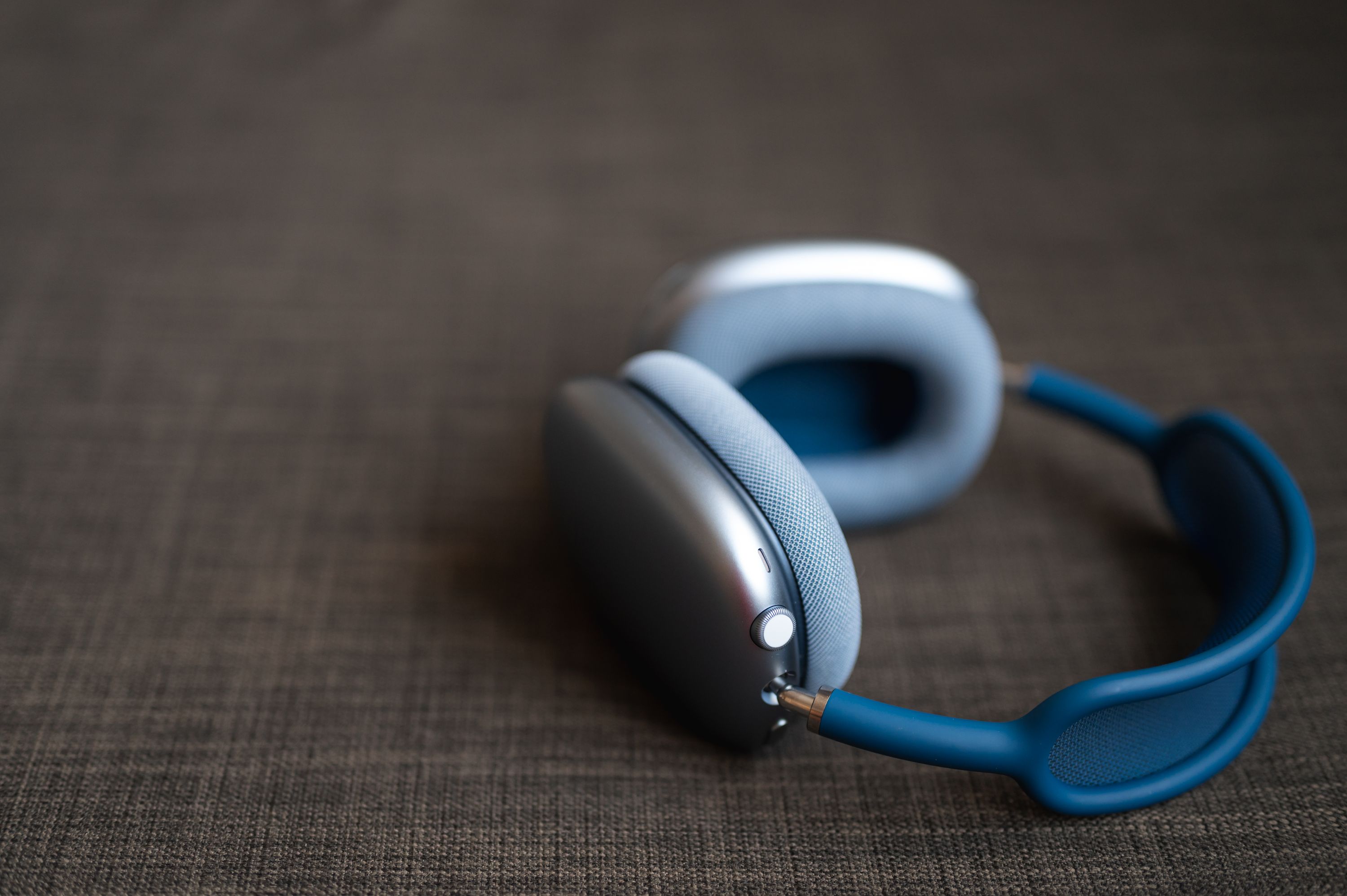
I’m conflicted about Apple’s latest foray into audio products, the AirPods Max over-ear headphones.
In striking opposition to every other review I’ve seen so far, I get to begin mine by stating that I am an audiophile. A friendly, reasonable one, but still—audio is my jam. I’ve been writing music for games and film for over 10 years, so one would hope that I’ve learned a thing or two about audio production in that time. It is, therefore, my sworn duty to be skeptical of consumer technology companies encroaching on the territory of high-end audio equipment built by companies with decades of experience.
Apple has had a long and fruitful relationship with music, but their track record with audio hardware is inconsistent. Somehow, the company that makes the HomePod—a marvel of mono speaker engineering—is also the company that continues to make and sell Beats products. Beats are a common entry point into the world of audio, but they’re priced the way they are because of their brand power, not because their quality justifies it. You can get much better sound, comfort, features, and build for less money.
Today, I find myself wondering to what extent that is also true for the AirPods Max.
Having forked over just under $900 CAD for the privilege of owning a pair, I wanted to see whether Apple is aiming to establish itself as a purveyor of quality audio gear—deserving of a high price tag—or whether we’ll once again be paying for style over substance.
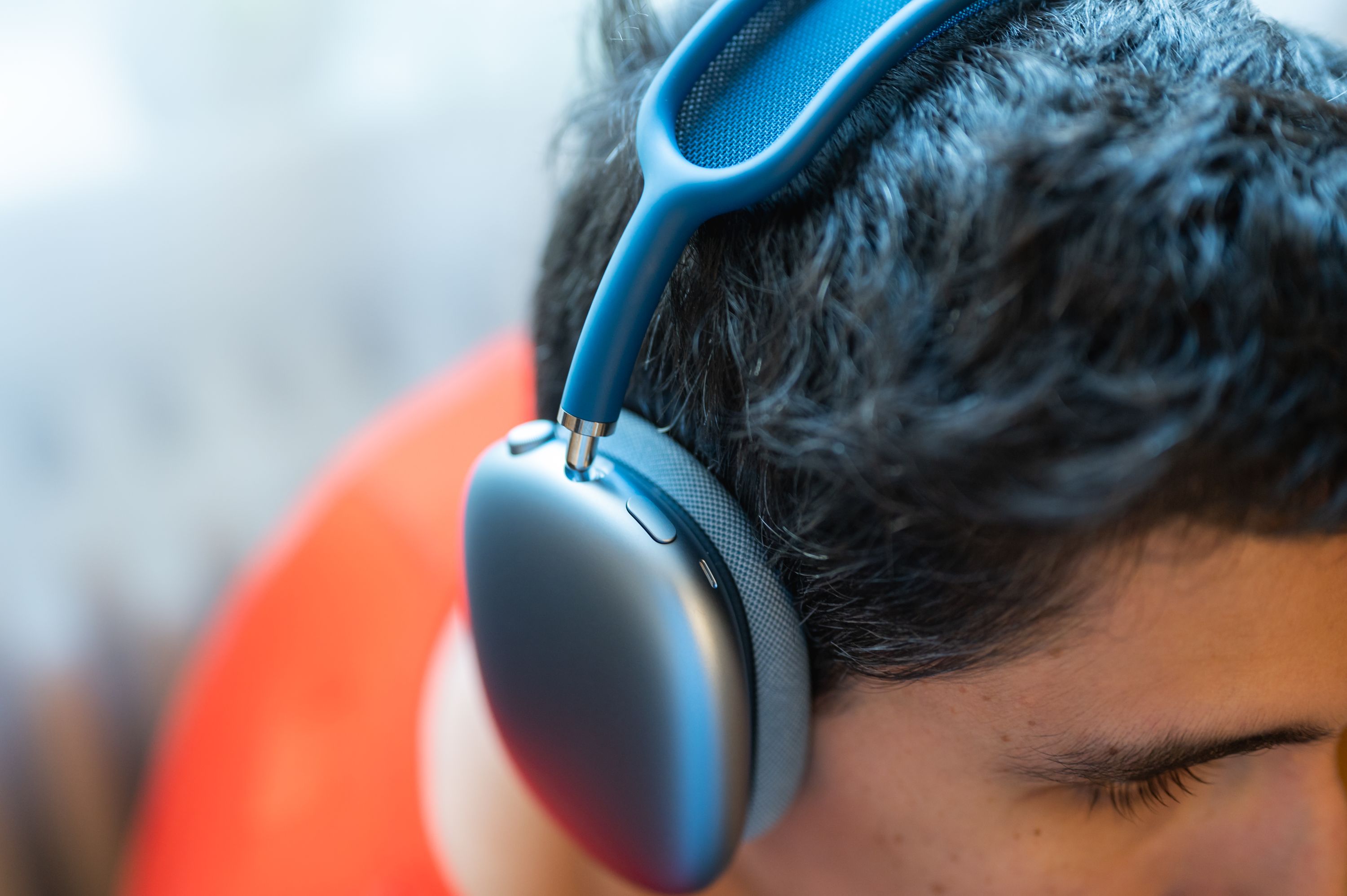
Built Like a Tank (…Because They’re Made Of Metal)
I laughed when I pulled the AirPods Max out of their box. I knew they would be heavy, but the experience of that weight is really something else.
For context, the Sennheiser PXC 550—my current headphone choice for travel—weigh 227g. The famously comfortable Bose 700 weigh 254g, a weight that’s matched by the popular Sony WH-1000XM4. Premium pairs like the Bang & Olufsen H9 (third generation) weigh 295g, and the Bowers & Wilkins PX7 just barely crest the 300g mark.
The AirPods Max weigh 385g.
In the same way that the iPhone 12’s aluminum build looks less fancy but feels nicer in use than its Pro counterparts and their stainless steel, the mostly-metal build of the AirPods Max is a choice that favours fashion over comfort.
The reason that other high-end headphone manufacturers lean heavily on plastic and even wood in their builds isn’t that they can’t afford metal. It’s because they’re interested in having human beings wear these products on their heads for hours at a time.
As one such human being with a head, I wish Apple had taken some cues from the competition on this front. Even after adjusting the way I wear them, I can’t escape the fact that these are just plain uncomfortable for long listening sessions. The mesh headband and foam ear cups do their best to mitigate this, but they can’t compensate for the sheer weight.
The headband is terrific. It may be my favourite approach to one that I’ve seen on a headphone. I have to wear the band further back on my head than I do with other headphones, but once I figured that out I was able to wear them for longer before needing a break. The ear cups are less impressive. They’re spacious and fairly well padded, but the material that’s used feels somewhat cheap and scratchy in texture. I suspect it’s more breathable than typical leather or vinyl ear cups, but the physical impression isn’t as good and I don’t particularly like how they feel on my face.
Then there’s the clamping force, which is very strong; AirPods Max squeeze your head like a musical bear hug. This is a common problem with heavy headphones, so I wasn’t surprised to see it here, but it accounts for the majority of the comfort problems I have.
The pressure points will differ depending on your fit, but I offered these to two other people in my vicinity for some extended listening and both reported discomfort; one on the top of their head, the other around their ears where the clamp force put pressure on the jaw. Personally, I experience it mainly as a headache after about the half hour to one hour mark.
Let’s disregard weight for a moment, though. These are fine for shorter listening sessions and everyone’s head is different, so I’m sure there are folks out there who will find them to be perfectly comfortable. The problems with metal go beyond weight: by prioritizing fashion value over practical value, Apple has committed a series of unforced errors.
Anodized aluminum feels nice and soft, but that softness means they scuff easily…like, say, when you fold them flat and notice that the ear cups bump and scratch against each other. This happens all the time and it makes me cringe every time; it’s like the horrible scraping that iMac users will be familiar with from trying to plug something into the rear ports. Also, parts of the world experience a season called winter, where the temperature drops and metal surfaces become dangerous things your skin will stick to.
Now, about that “protective case”.
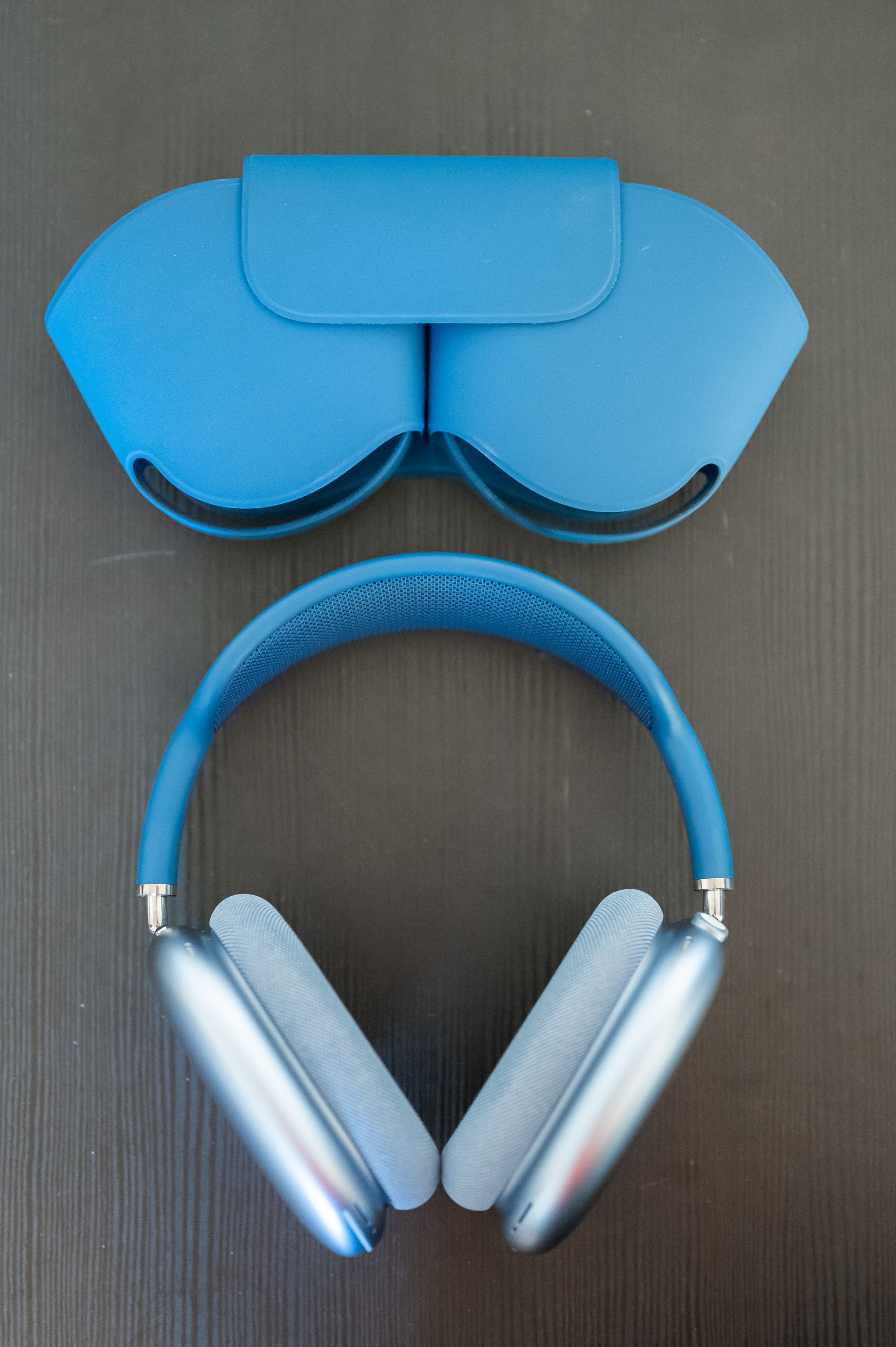
I want to save myself some typing and point you to the part of MKBHD’s review video where he talks about the storage solution that these $900 headphones ship with. Go ahead and give that a watch. Back? Great. What he said. Before getting these, I thought the hate for the case was hyperbolic, but the truth is it really does feel cheap and pointless, particularly after Apple clarified that it isn’t necessary for putting the headphones into standby mode.
Before we leave the topic of their physical design, I want to share one last complaint about the AirPods Max: the buttons. I don’t mind the feel of them myself (though a friend felt they were cheap and unpleasant), but I do mind the way they work. The Digital Crown, which controls volume, is also the button that controls playback and Siri. The other, larger button is used to switch between the listening modes: Active Noise Cancellation (ANC), Transparency mode, and none.
I appreciate having physical controls for these things, but I intuitively expected that all the audio-related functions would be accessed from one button and that the playback and feature controls would be accessed from the other. Tying playback controls to the volume knob feels strange to me, and increases the chances of unintentional volume changes when you’re trying to execute a double or triple press—something made even trickier if you’re wearing gloves.
There is, naturally, no way to configure these button assignments. At best, you’re able to change the scrolling direction of the volume knob and restrict which listening modes the other button switches between, but that’s about it. That latter feature also seems to be buggy in the current firmware (3C16) because despite enabling all three, I find that it defaults back to just Noise Cancellation or Transparency whenever I reconnect.
Deal-breaker? No. But another strange design choice to wrap up this section.

Wait, one more complaint: the battery life is the shortest of any headphone in this category. This isn’t an issue in and of itself considering they’ll still last through a full day of listening. Still, I hoped that some of that excess size and weight would translate into battery capacity.
On the topic of power, Apple has indicated that the AirPods Max have two low-power states and you don’t need the case to access them—great news since I refuse to use that stupid thing. Here’s what they say:
If you set your AirPods Max down and leave them stationary for 5 minutes, they go into a low power mode to preserve battery charge. After 72 stationary hours out of the Smart Case, your AirPods Max go into a lower power mode that turns off Bluetooth and Find My to preserve battery charge further. If you put your AirPods Max in the Smart Case when you’re not using them, they go into a low power mode immediately to preserve battery charge. After 18 hours in the Smart Case, your AirPods Max go into an ultralow power mode that turns off Bluetooth and Find My and maximizes battery life.
Okay, now I’m done talking about the physical characteristics.
Sonic Boom
So there I was, shaking my head at the weight and the design while I got them connected. I was already looking up Apple’s holiday return policy when I hit play on my usual suite of test material and…oh.
Oh.
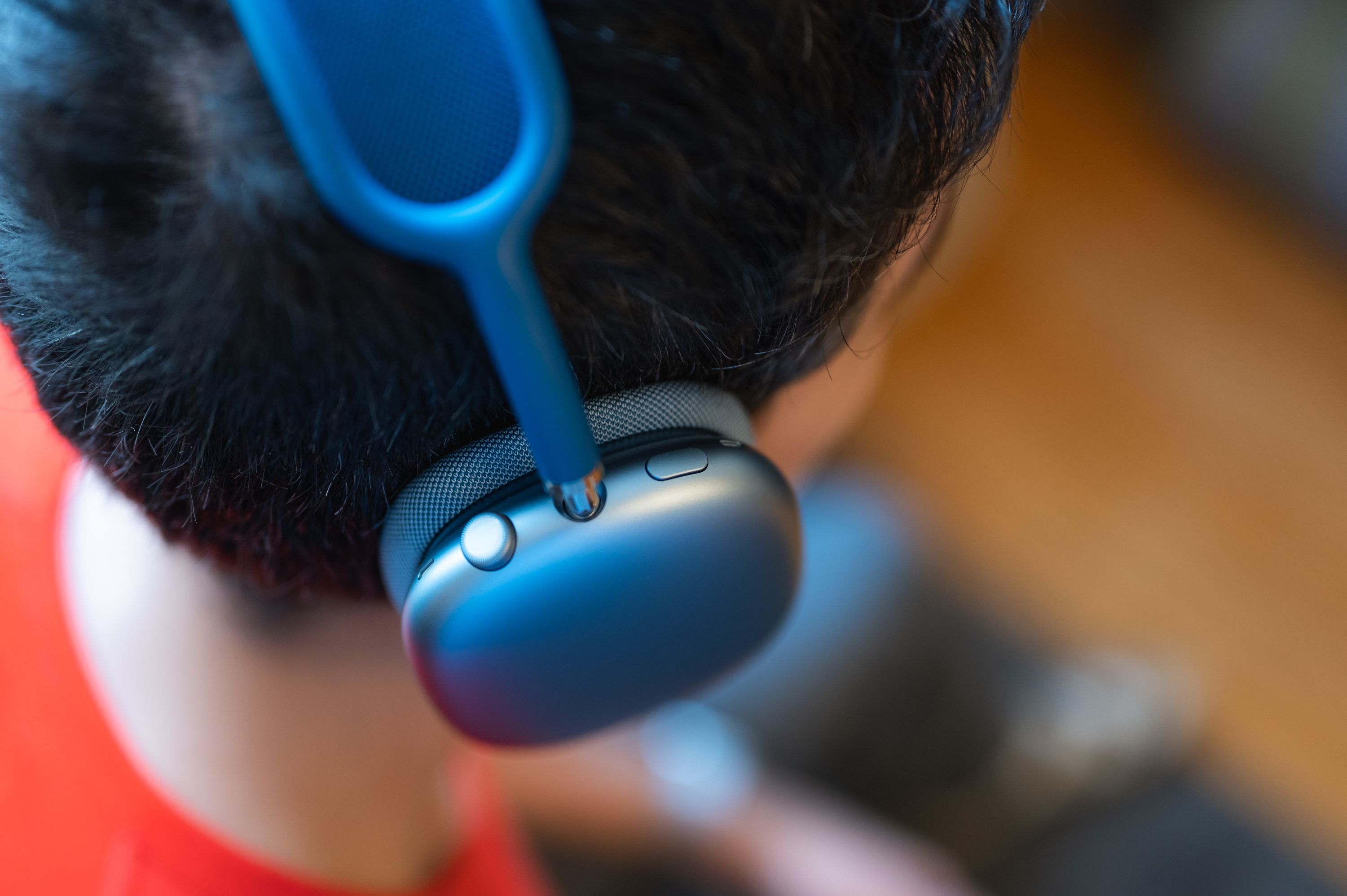
I was reminded of the first time a pair of wireless headphones impressed me. I put them on and somehow found myself lying on the floor of my room, two hours later, having become completely lost in the music. Since then, other headphones have achieved this magical time-dilation effect, but I didn’t expect to feel it coming from an Apple product.
Don’t get me wrong, Apple has amazing audio engineers. I adore my AirPods Pro. They’re not the best value for money in terms of sound, but they have a pleasant, relatively neutral profile and have become my daily listening companions. Similarly, the HomePod is my favourite smart speaker for sound because it manages to provide a remarkably full and dynamic listening experience for a compact mono sound source.
In a word, the AirPods Max sound sublime.
They have a beautiful way of making you feel immersed and enveloped by the music, with a tremendously wide soundstage, solid instrument placement, and some of the most articulate dynamics I’ve heard from consumer equipment. They remind me of my open-back studio headphone and amp setup (the geeky audiophile equipment) more than other wireless headphones.
Several hours of listening later, I wanted to make sure I wasn’t just experiencing some sort of hallucination caused by the extreme clamping force of these metallic behemoths, so I called up my friend and had him bring over his pair of Bang & Olufsen H9i—my previous benchmark for best wireless ANC headphones—to do some critical listening.
We cruised through our respective music libraries, selecting favourite tracks and listening, each of us with one of the pairs on. Then we’d swap (as others have pointed out, this is the only reliable way to compare headphones because we have terrible memory for audio). We went back and forth like this for a few hours and I found myself increasingly bewildered by the experience of hearing the AirPods make the H9i sound a bit congested, closed in, and lacklustre by comparison.
I threw my most demanding tracks at them, including some of my own music. After all, judging headphones by the way other people’s music sounds is inherently subjective; I might prefer one rendition over another, but I have no insight into which best represents the artist’s intent. When I am the artist though, I can make objective assessments. And my assessment is simple: given the choice, I’d rather have someone listen to my work on the AirPods Max than the H9i.
This was not supposed to happen.
I didn’t even get to hook them up to my amp and listen to my lossless music collection yet (mainly because they sell the required cable separately and haven’t I already spent enough on this?!) The audiophile association is so going to kick me out for this! I’ll have to return my adamantium cables!
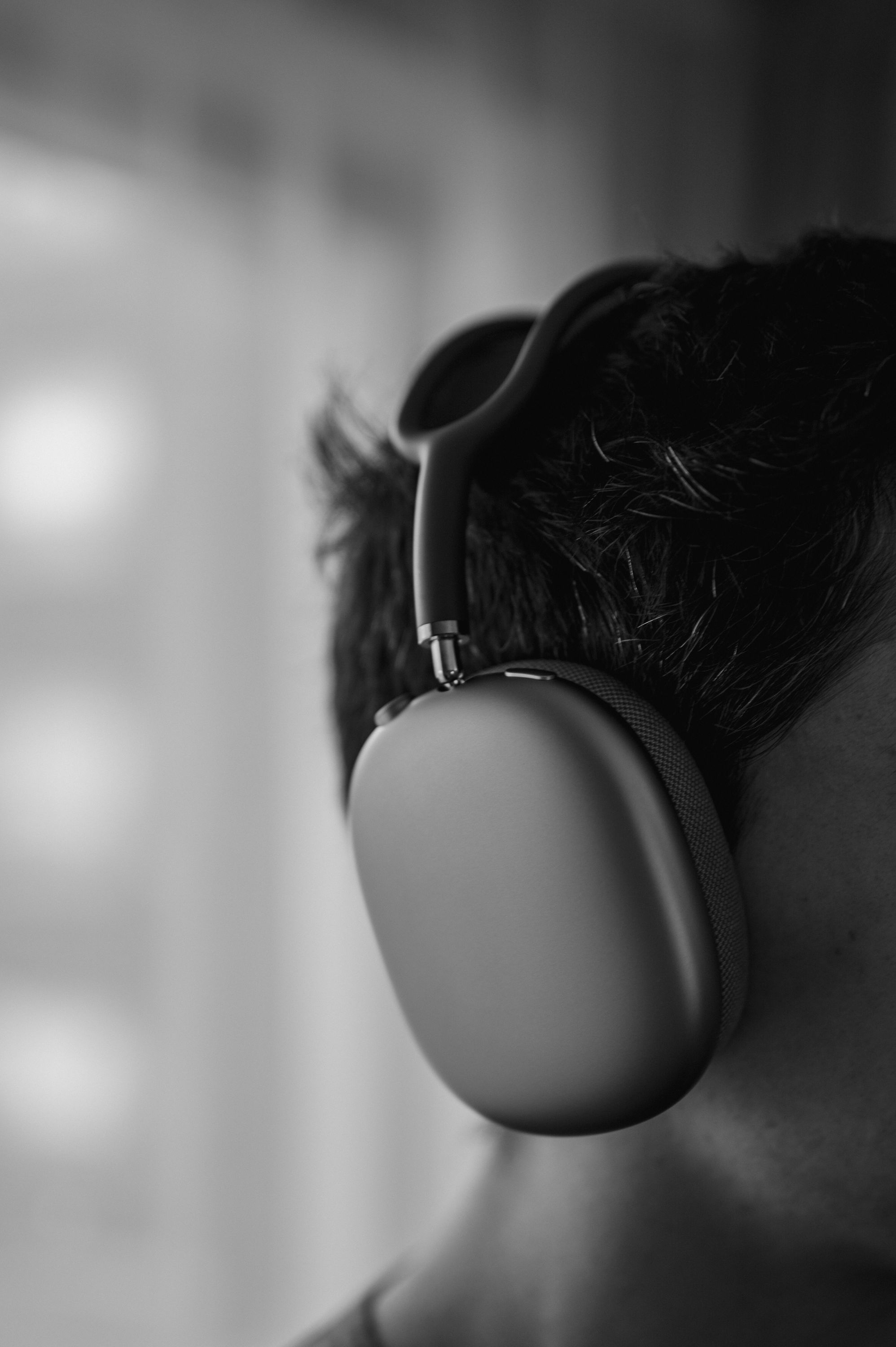
Smoke And Mirrors
Ah, but wait. Now I put my audiophile hat back on and pull back the curtain to reveal: it’s fake!
Yes, much of that magical soundstage is in fact manufactured by the headphones’ Digital Signal Processing (DSP). The same technology that enables Spatial Audio to work also allows Apple to artificially enhance the sense of space and re-balance the sound to remain steady and clean even at very high and very low volumes. Those dual H1 chips are working hard.
This is also where my review became very tricky.
When you’re dealing with DSP-based sonic enhancements—especially ones like this that are actively tuned based on the shape of your head, your environment, etc.—different people will very literally hear different things. Already, I’m seeing commentary from audiophile reviewers saying that the DSP is horrible, ruining the balance of music. And those people may well be correct for their listening environment. I can’t judge their experience because it’s so dependent on factors that can’t be controlled.
The question is: does it matter?
If the end result is that the AirPods Max sound better than any other headphone in their category that I’ve tried, does it matter that they achieve that partially through software? I’ll further threaten my audiophile credentials here and say: nope. I don’t think it matters! In the same way that a good photo is a good photo whether I shot it on my camera or had my iPhone cobble it together from multiple frames and computational trickery, the end result is still a photo I’m happy with.
At least the hardware aspects that can be judged objectively are…objectively good: the dynamic drivers are clearly well-designed, with incredibly low distortion and plenty of power. They aren’t using any fancy planar magnetic technology, but that makes sense for this kind of headphone. Score one for the hardware team.
I guess I can say this: if you’re lucky, have the right shaped head, or are otherwise blessed by the DSP experience gods, the AirPods Max have the potential to outshine every other pair of headphones in this category.
Some Much-Needed Context
See, the trouble is that I spent almost $900 on these. And if you’re willing to drop that kind of cash on audio equipment, you already have access to an entirely different tier of experience than what you can get in this wireless ANC headphone category.
Consider: my audiophile listening setup, which is very modest, consists of a pair of acclaimed but contextually low-end studio headphones—the MassDrop/Sennheiser HD 6XX)—connected to a JDS Labs Atom amplifier that’s boosting a signal prepared by the Topping D30 Digital-to-Analog Converter (DAC). Total cost of equipment? A little under $600 CAD. If I were to strip out the latter two elements and keep just the headphones, I’d still have better sound than the AirPods Max and only be out about $300 CAD.
But wait, you say, what’s the downside? Why would I ever bother to buy other headphones? Well, the above setup wins on sound and comfort, but it’s wired, it doesn’t fold or pack down in any way, and it has no noise-cancelling, spatial audio, or other fancy features. It’s a setup for dedicated listening that you enjoy at home. It’s been well-used during the pandemic, that’s for sure, but under normal circumstances I want to bring some of that sonic beauty with me when I travel, commute, go on walks, etc.
That’s why the wireless ANC headphone category exists, and it’s those extra features and portability affordances that you tend to pay for. The challenge, then, is to see how much of the sonic prowess of a studio setup you can bring with you while prioritizing comfort and carry, all while suddenly having to contend with connectivity and battery life.
My problem with this category is that it seems inherently limited. If you’re taking these out into the world and listening while trying to cancel the sound of traffic, coffee shops, etc. then how focused are you really on the nuances of the music? Most people rarely take the opportunity to do any focused listening, and when we do it probably isn’t during our noisy commute or while at work.
In my mind, that imposes a sort of ceiling on how much it’s worth spending here. Not because you can’t find good sound, but because that sound can’t be appreciated in the situations where you’re most likely to be using the headphones. You’ll probably notice easier packing, longer battery life, or better noise cancellation before you notice the subtleties of how one pair plays music compared to another. They’re just different use cases.
Then again, most people are only going to own a single pair of headphones, so if those headphones can offer both the conveniences of the portable category and some of the sound of their sedentary counterparts, then it may be worth the extra cash.
The question becomes which set of compromises you prefer to make.
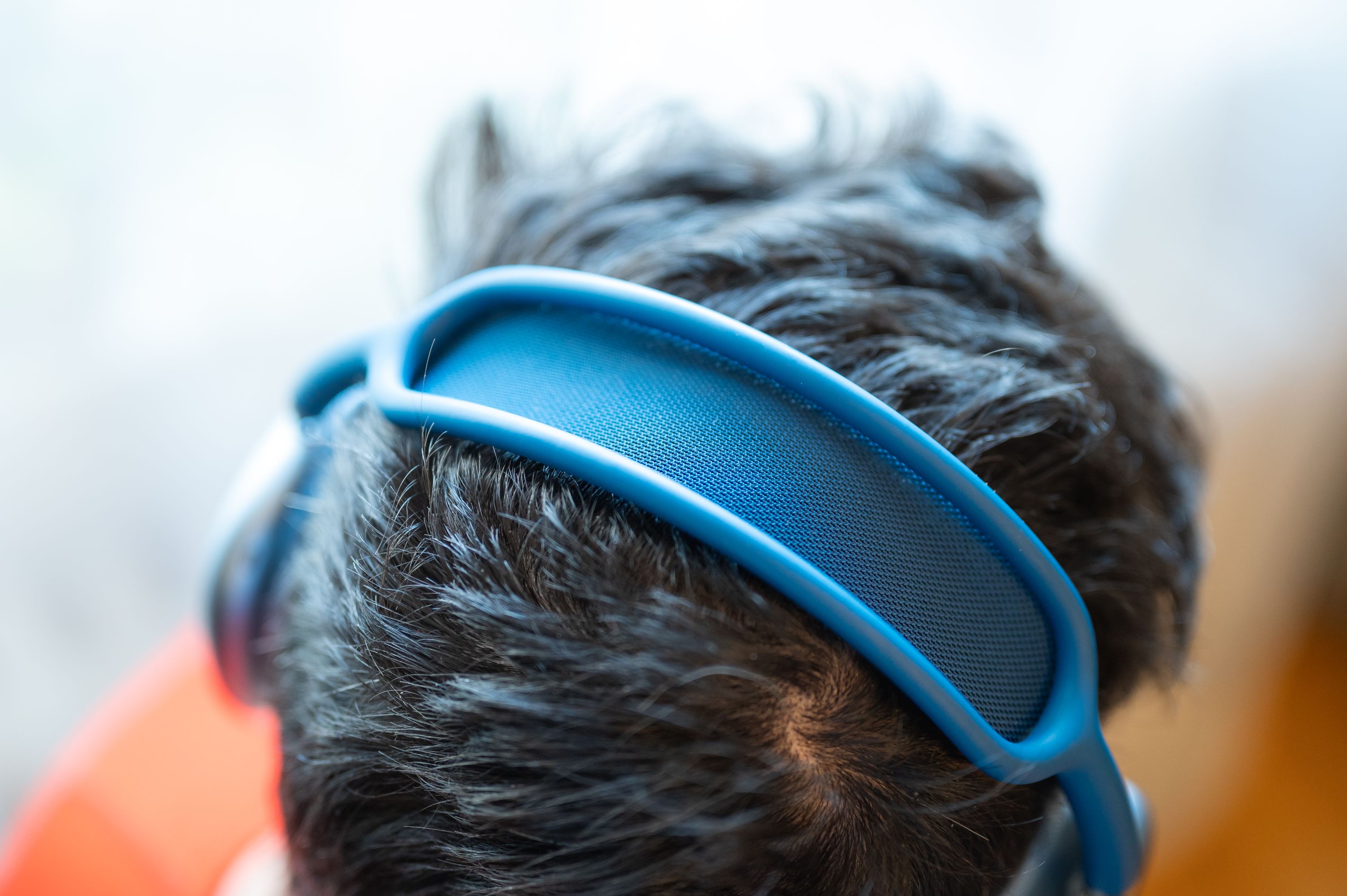
Noise Cancellation, Transparency, and Spatial Audio
We’re 2,000 words in here—how’re you holding up? I’ve had the AirPods Max on my head listening to stuff as I’ve been writing this and I have to take them off…my head needs a break. The discomfort is real, folks.
I want to wind down this review with a discussion of the special features that the AirPods Max bring to the table. Some, like ANC and transparency mode, are available on basically all of their competitors and I can be brief about them: they’re best-in-class.
Yes, the noise-cancelling is just as good as Sony’s. It’s not necessarily tuned the same, as every manufacturer has a different approach, but the efficacy is absolutely comparable.
And yes, the transparency mode is the best I’ve heard on over-ear headphones. It almost feels like you’re wearing open-back headphones, that’s how good it is. That being said, if Transparency mode is a primary factor in your decision-making, keep in mind that the AirPods Pro are better at it—it makes sense since they don’t have to work around having your entire ear covered.
That brings us back to the H1-specific features like proprietary pairing and auto-switching capabilities with Apple devices, Spatial Audio, and the ability to split a connection to one device with another pair of H1 devices (AirPods, some Beats models) so two people can listen at once, each with independent volume control.
These are all appealing features, but the truth is that none of them would sway my decision individually. The quick pairing is a one-time advantage, so that’s basically negligible. The auto-switching is great but in my usage it’s only been reliable when switching between iOS devices, not macOS ones. And if you aren’t constantly switching devices then it’s going to be entirely lost on you.
As for Spatial Audio, it’s a very cool effect but it’s currently too limited to be of much interest. It only works for surround sources and only if the app supports it (which major ones like Netflix and Prime still don’t). It also requires your playback device to be equipped with positioning sensors, which only iOS devices are. If you want to try it out on a Mac or, more likely, your Apple TV then you’re out of luck.
This is baffling because it means that your only way of experiencing the purported “cinematic” experience of Spatial Audio is by staring at a tiny screen while doing it. This is clearly just a matter of time—I’m convinced the next Apple TV will be compatible—but meanwhile it feels hamstrung.
Value
I don’t like talking about cost in my reviews because it’s not my place to weigh in on how others spend their money. Plus, even if these were truly awful headphones, people would still buy them in droves because they’re made by Apple and are probably going to become fashion icons (see: Beats). I have no issue with that.
But I want to discuss value for the folks who aren’t as immersed in the audio world, who don’t really know the brands and options, and who simply want to get themselves a nice pair of headphones. Perhaps they want to step up from their Beats, or they want to go from earbuds to over-ear headphones.
Whatever the case, those people should be aware that the AirPods Max represent terrible value if your main goal is to get an intelligent balance between comfort, sound, longevity, ANC, and style. They’re too heavy to be comfortable, they don’t fold or have a reasonable case to protect them when you’re travelling, and a lot of their sonic advantages are going to be lost on you if you’re mostly using them on the go.
Is there an audience for AirPods Max? Well…yes.
If you’re the kind of person who actually makes time for focused listening, who knows you’ll be using them mostly at home, who needs the convenience of wireless, who will eventually make use of Spatial Audio a lot, who tends to take listening breaks every hour or so to avoid fatigue, and who’s willing to pay a lot of money to own a single pair of headphones that can cover almost any ground, the AirPods Max may well be the best choice on the market right now.
But if comfort, portability, and practicality are your priorities, then the competing headphones from Sony, Sennheiser, and Bose are a much wiser purchase at a much lower price point.
Similarly, if sound quality eclipses all other criteria for you and you don’t care about wireless use, then you’re looking at the wrong category of product altogether; you’ll want to head over to the headphones subreddit or one of the many friendly audiophile forums out there and ask for some advice on how to get started. Ironically, you’ll end up paying less money than either of the two groups above—at least at first.
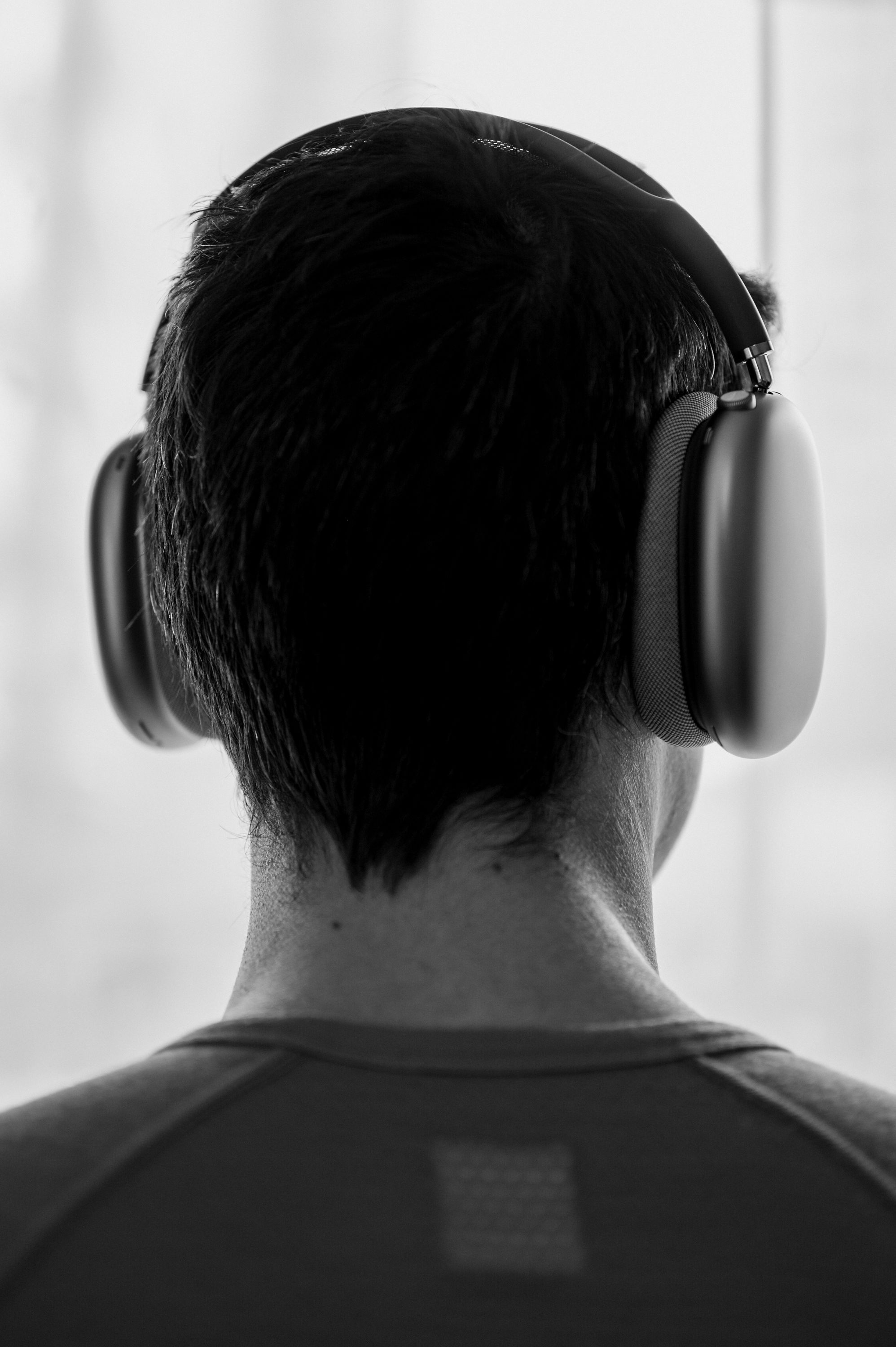
Wrapping Up
So there you have it. I hate these stupid headphones because so much of their physical design is flawed…but they sound so wonderful that I can’t help but smile whenever I listen to things through them. At least until my head starts hurting.
I’ll spare you, but there are many other aspects that I could spend another thousand words on: the microphone quality, Headphone Accommodations, headband fragility, battery replacement, third party accessory potential, etc…I have a lot to say about the AirPods Max because they inspire passion.
They frustrate me because you can tell that these could have been disruptively perfect. If Apple had made them lighter, chosen better materials, made them fold properly, given them a useable case, included the damn 3.5mm audio cable—even if they’d kept the price—the AirPods Max would be an easy recommendation.
As it is though, I have no idea who I would recommend these to. I think anyone—even audiophiles—should find a way to audition them just for fun. But actually dropping this much money to own a pair? I don’t know.
As for me, I bought them because I had to know what the company’s first true foray into this category would look like. Now I know. And the intelligent, wise, and financially savvy side of me should hastily pack them up and give them back…before the other side of me gets lost in the music again.